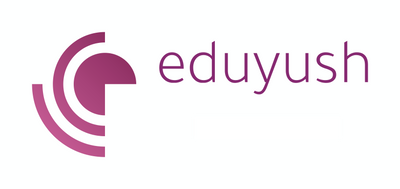Workbook on IAS 2 Inventories
INTRODUCTION
Aim
The aim of this workbook is to assist the individual in understanding Inventories according to IFRS. Inventories are the subject of International Accounting Standard 2.
It does not apply to:
- Work in progress arising from Construction Contracts
- Financial Instruments
- Biological assets related to agriculture and agricultural produce at the point of harvest.
- Commodity broker-traders who measure their inventories at fair value less costs to sell. When such inventories are measured at fair value less costs to sell, changes in fair value less costs to sell are recognised in the income statement in the period of the change.
- Producers of agricultural and forest products, agricultural produce after harvest, and minerals and mineral products, when they are measured at net realisable value in accordance with well-established practices in those industries. When such inventories are measured at net realisable value, changes in that value are recognised in the income statement in the period of the change.
Measurement
Inventories must be measured at the lower of cost and net realisable value.
COST OF INVENTORIES
A key issue in accounting for inventories is the amount of cost to be recognised as an asset and carried forward until the related revenues are recognised.
The cost of inventories comprises all costs of production, costs of conversion, and other costs incurred in bringing the inventories to their present location and condition.
|
Example: repackaging costs You are a wholesaler. You repackage goods for clients. The repackaging costs are included in your inventory. |
|
|
|
|
|
I/B |
DR |
CR |
|
Repackaging costs |
I |
|
2.000 |
|
Inventory |
B |
2.000 |
|
|
Transfer of repackaging costs to inventory |
|
|
|
COSTS OF PURCHASE
These comprise the purchase price, transport and handling costs. Taxes and import duties are included, unless they can be reclaimed from the authorities. Trade discounts and rebates are deducted from the costs.
|
Example: supplier rebate You are an importer. At the end of each year, you receive a rebate equal to 5% of your total purchases from your supplier. Inventory is valued on the basis of: -Transport costs to your premises -Import duties relating to the goods. -Supplier rebate |
|
|
|
|
|
I/B |
DR |
CR |
|
Inventory |
I |
|
25.000 |
|
Cash (from supplier) |
B |
25.000 |
|
|
Reduction of inventory costs to reflect rebate |
|
|
|
COST OF CONVERSION
These are production costs, such as direct labour. They also include a systematic allocation of production overheads.
|
Example: allocating costs Your factory provides a packaging facility. 20.000 direct labour hours are used in each period. These are allocated to each product in proportion to the number of hours that each product uses in the packaging facility. Each direct labour hour costs $10. Product 1 uses 200 hours per batch. Product 2 uses 600 hours per batch.
For each batch of Product 1, you will allocate 1% of the period’s packaging direct labour costs (200/20.000*$10). For each batch of product 2, you will allocate 3% of the period’s packaging direct labour costs (600/20.000*$10). |
|
|
|
|
|
I/B |
DR |
CR |
|
Direct labour costs-packing |
I |
|
8.000 |
|
Inventory-product 1 |
B |
2.000 |
|
|
Inventory-product 2 |
B |
6.000 |
|
|
Allocation of packaging direct labour costs for each batch |
|
|
|
Fixed production overheads are those indirect costs that remain virtually unchanged at different levels of production. Examples are factory rent, management and administration.
Variable production overheads are those indirect costs that vary directly with different levels of production, such as indirect labour and indirect materials.
The allocation of fixed production overheads to the costs of conversion is based on the normal capacity of the production facilities. This is the average expected output over a number of periods, taking into account production reductions due to planned maintenance.
Example: planned maintenance
Each August, you close the factory for routine maintenance and cleaning. You take account of this by dividing the fixed production overheads by the number of actual production days over the year, rather than the calendar days. On Saturdays, you work only half a day.
Your calculation of actual production days should count each working Saturday as only half a working day.
Low production levels, or idle plant are not taken into account in determining the allocation rate of fixed production overheads.
|
Example: fire in a factory There is a fire in your factory, which stops production for 6 weeks. The fixed production overheads incurred during that time should not be included in the costs of inventory. They should be treated as an expense for the period. |
|
|
|
|
|
I/B |
DR |
CR |
|
Depreciation |
I |
|
9.500 |
|
Rent of factory |
I |
|
17.000 |
|
General production overheads |
I |
26.500 |
|
|
Factory overheads being charged to general overheads, when no production occurs. |
|
|
|
Unallocated overheads are recognised as an expense in the income statement, in the period that they are incurred. In periods of abnormally-high production, the overhead allocation rate is reduced, so that inventories are not measured above cost.
Example: normal overhead allocation
You factory works overtime every night and weekends for 2 months to complete a special order.
This order is a low margin order that has a sales value of $500 per unit.
Your direct costs are $400 per unit.
Your normal overhead allocation would be $250 per unit. For this order, this level of allocation would create a loss of $150 per unit ($500-$400-$150).
Normal output of the factory = 10.000 units per week. This recovers $2.5m per week (10.000 * $250) of fixed overheads.
The new level of output is 55.000 units per week.
To recover the $2.5m overhead, the overhead allocation can be reduced to
$45.455 per unit ($2.5m/55.000)
This lower overhead allocation allows a profit of ($500-445.455) = $54.
Variable production overheads are allocated to each unit of production, based on the actual usage of the facilities.
|
Example: variable production overheads Your firm has a centralised production quality control. It costs $300 per productive hour to run.
Charge $300 per hour multiplied by the number of hours used, to each batch of products that uses the facility. For this batch, 50 hours were used. |
|
|
|
|
|
I/B |
DR |
CR |
|
Expenses- centralised production quality control |
I |
|
15.000 |
|
Inventory |
B |
15.000 |
|
|
Transfer of centralised production quality control costs to inventory |
|
|
|
BY-PRODUCTS
Most by-products are immaterial. If this is the case, then they are measured at net realisable value, and this value is deducted from the cost of the main product.
|
Example: by-products Each batch of good product produces scrap metal that is resold for $10. Reduce the costs of each batch by $10 to account for the revenue from the scrap metal. This example uses 6.500 batches. |
|
|
|
|
|
I/B |
DR |
CR |
|
Inventory |
I |
|
65.000 |
|
Cash (from scrap merchants) |
B |
65.000 |
|
|
Reducing costs of inventory by cash from by-products |
|
|
|
JOINT PRODUCTS
Where two, or more, main products are produced, but the costs of conversion cannot be separately identifiable, these costs are allocated on a rational and consistent basis.
You may use the relative sales value of each product, either when they are complete, or when they are separately identifiable in the production process.
|
Example: allocating costs, based on product sales value You are processing oil. Processing costs for the period are $300.000 The processing provides equal quantities of 2 products. Product 1 sells for $25 per kilo. Product 2 sells for $50 per kilo. Product 1 should bear 1/3 of the activity’s costs. Product 2 should bear 2/3 of the activity’s costs. |
|
|
|
|
|
I/B |
DR |
CR |
|
Processing costs |
I |
|
300.000 |
|
Inventory-product 1 |
B |
100.000 |
|
|
Inventory-product 2 |
B |
200.000 |
|
|
Allocating processing costs to products, based on sales value. |
|
|
|
OTHER COSTS
Other costs can only be included in the cost of inventory if they are incurred in bringing the inventories to their present location and condition.
These would include inward transport and storage prior to completion of production, and specific design work required for a special client.
In limited cases, borrowing costs can be included in the cost of inventories.
These are covered in IAS 23 Borrowing Costs. Where you buy goods on deferred settlement terms, and the price includes a financing element, that financing element is recognised as interest expense over the period of credit.
|
Example: purchase on long-term credit Your supplier offers you a cash price of $7.000 per unit, or one year’s credit at a price of $8.000 per unit.
If you choose the credit terms, then only $7.000 per unit should be recorded as inventory.
The remaining $1.000 per unit should be recorded as a finance expense. |
|
|
|
|
|
I/B |
DR |
CR |
|
Accounts payable |
B |
|
8.000 |
|
Inventory |
B |
7.000 |
|
|
Finance costs |
I |
1.000 |
|
|
Purchase of one unit on long-term credit |
|
|
|
COSTS EXCLUDED FROM INVENTORIES
Examples of costs expensed in the period that they are incurred are:
- Abnormal amounts of wasted materials, labour and other production costs.
- Storage costs for finished goods.
- General administration costs.
- Selling costs.
COST OF INVENTORIES OF A SERVICE PROVIDER
Where providers of services have ‘inventories’, they usually comprise work in progress that has not yet been billed to clients. Costs relating to sales and general administrative personnel are not included, but recognised as expenses in the period that they are incurred. The cost of inventories should not include profit margins that will be charged when the work is billed.
|
Example: work in progress Your firm is an architect’s practice.
You record staff time on time sheets. At the end of the period, you have some unbilled work in progress of 485 hours for various clients.
These should be valued as inventory at the cost of salaries, social security and pensions. The total cost = $100 per hour.
A charge for supervisory staff can also be included (33 hours in this example), but not a charge for general administrative overheads, nor profit margin. |
|
|
|
|
|
I/B |
DR |
CR |
|
Staff costs |
I |
|
485.000 |
|
Inventory-work in progress |
B |
485.000 |
|
|
Supervisory staff costs |
I |
|
33.000 |
|
Inventory-work in progress |
B |
33.000 |
|
|
Allocation of staff costs to work in progress |
|
|
|
MEASUREMENT OF COST
Standard costs should be based on normal levels of output, and should be reviewed and revised regularly.
The cost of inventories of products that are not ordinarily interchangeable and goods, or services, produced and segregated for specific projects shall be assigned by using specific identification of their individual costs.
Specific identification of cost means that specific costs are attributed to identified items of inventory. This applies for items that are segregated for a specific project, regardless of whether they have been bought or produced.
Specific identification of costs is inappropriate when there are large numbers of items of inventory that are ordinarily interchangeable. The method of selecting those items that remain in inventories could be used to obtain predetermined effects on profit.
COST FORMULAS
The cost of inventories should be measured on a first-in, first-out (FIFO) or weighted-average cost basis.
Last-in, first-out (LIFO) is not an acceptable method.
All inventories of a similar nature should use the same measurement system, regardless of their geographical location, or tax system.
Example:
Your group produces mobile phones. Your European subsidiaries use FIFO, your Asian subsidiaries use weighted-average cost and your US subsidiaries use LIFO for inventory valuation.
For IFRS group accounts, all inventories need to be valued using FIFO or weighted-average cost (though not a mixture of the two).
FIFO
FIFO assumes that the first items bought are the first items sold. Therefore, at the end of the period, any items in inventory are the items purchased (or produced) most recently.
|
Example: FIFO You are selling one model of car. You have no inventory at the start of the period. You buy 4 cars during the period. Due to price rises, the cars cost you: $6000, $6500, $7000, $7500 in the order you purchase them. You sell 2 cars, and use FIFO to value your inventory. The value of your inventory at the end of the period is $14500 ($7000+$7500). Your cost of sales = $12500 ($6000+$6500). |
|
|
|
|
|
I/B |
DR |
CR |
|
Cost of sales |
I |
12.500 |
|
|
Inventory |
B |
|
12.500 |
|
Allocation of inventory costs to costs of sales |
|
|
|
WEIGHTED-AVERAGE COST
The weighted-average cost is calculated from the inventory at the start of the period, plus any items bought (or produced) during the period.
|
Example: weighted average You are selling one model of car. You have no inventory at the start of the period. You buy 4 cars during the period. Due to price rises, the cars cost you: $6000, $6500, $7000, $7500 in the order you purchase them. Total cost=$27000.
You sell 2 cars, and use weighted-average cost to value your inventory.
The value of your inventory at the end of the period is $13.500 ($27000/2). Your cost of sales = $13.500 ($27000/2). |
|
|
|
|
|
I/B |
DR |
CR |
|
Cost of sales |
I |
13.500 |
|
|
Inventory |
B |
|
13.500 |
|
Allocation of inventory costs to costs of sales |
|
|
|
The “Retail Method’’
The retail method is often used in the retail industry for measuring inventories of large numbers of rapidly changing items with similar margins for which it is impracticable to use other costing methods.
The cost of the inventory is determined by reducing the sales value of the inventory by the appropriate percentage gross margin.
The percentage used takes into consideration inventory that has been marked down to below its original selling price. An average percentage for each retail department is often used.
NET REALISABLE VALUE
There is a risk that inventories will be sold for less than their cost.
Reasons include:
- General fall in market prices for the goods.
- Damage to the goods.
- Obsolescence.
- Additional costs needed to complete manufacture.
(Please see the following 4 examples)
|
Example- net realisable value You purchase 100 barrels of oil @ $40 per barrel, as a speculative purchase
The price falls to $25 per barrel at period end, and no oil has been sold. Reduce the value to $25 per barrel, and recognise a $1.500 net realisable adjustment as an expense immediately. |
|
|
|
|
|
I/B |
DR |
CR |
|
Inventory |
B |
4.000 |
|
|
Cash |
B |
|
4.000 |
|
Inventory |
B |
|
1.500 |
|
Inventory loss |
I |
1.500 |
|
|
Revaluation of inventory to net realisable value |
|
|
|
|
Example: You are selling machines that cost you $100 each. A fire damages 30 of your machines. You can sell them as scrap for $10. Reduce the value of the 30 machines to $10, and recognise a $2700 (30*$90) net realisable adjustment as an expense immediately. |
|
Example- net realisable value-cars You are selling cars that cost you $5.000 each. New legislation is introduced that requires all vehicles to have new emission controls. These will cost $2000 per car, but the selling price will only be $6500 per car. This will generate a loss of $500 per car. You have 30 cars in stock Recognise a $500 per car net realisable adjustment as an expense immediately. |
|
|
|
|
|
I/B |
DR |
CR |
|
Inventory |
B |
|
15.000 |
|
Inventory loss |
I |
15.000 |
|
|
Revaluation of inventory to net realisable value |
|
|
|
If the price at which inventories will be sold is less than the current cost, allowing for completion costs, the value of the inventory will be reduced to its net realisable value.
This recognises the future loss immediately.
|
Example: net realisable value-repackaging You are selling cans of beans to a supermarket. You have 2.000 cases in stock The client changes its packaging, and requires you to repackage your current inventory, without compensation. You will incur a loss of $7 for every case of cans in your inventory. Reduce the value of inventory by $7 per case as a net realisable value adjustment, and recognise the loss immediately as an expense. |
|
|
|
|
|
I/B |
DR |
CR |
|
Inventory |
B |
|
14.000 |
|
Inventory loss |
I |
14.000 |
|
|
Revaluation of inventory to net realisable value |
|
|
|
Items should be reviewed individually for write-downs to net realisable value.
|
Example: net realisable value-review items individually You sell packets of coffee and tea. The market price of coffee falls below your cost price. You will make a loss of $86.000 on your current stock. The market price of tea rises dramatically. You will make a profit of $100.000 on your current stock. Though you will make a loss on your inventory of coffee, you will more than compensate for the loss with the extra profit you make from the sale of your inventory of tea. A write-down of the coffee to net realisable value is still required. |
|
|
|
|
|
I/B |
DR |
CR |
|
Inventory-coffee |
B |
|
86.000 |
|
Inventory loss |
I |
86.000 |
|
|
Revaluation of coffee inventory to net realisable value |
|
|
|
Inventories are usually written down to net realisable value item by item.
In some circumstances, however, it may be appropriate to group similar or related items. This may be the case with items of inventory relating to the same product line that have similar purposes or end uses, are produced and marketed in the same geographical area, and cannot be practicably evaluated separately from other items in that product line.
Service providers generally accumulate costs in respect of each service for which a separate selling price is charged. Therefore, each such service is treated as a separate item.
Estimates of net realisable value should be based the best evidence available. Events after the period that have an impact on price or costs should be taken into account.
|
Example: net realisable value-after the balance sheet date You purchase 100 barrels of oil @ $30 per barrel, as a speculative purchase (you have no contract to sell the oil). The price falls to $25 per barrel at period end, and no oil has been sold. The price falls to $20 per barrel just before the accounts are to be approved. Still no oil has been sold. Reduce the value to $20 per barrel, and recognise a $1000 net realisable adjustment as an expense immediately. |
|
|
|
|
|
I/B |
DR |
CR |
|
Inventory |
B |
|
1.000 |
|
Inventory loss |
I |
1.000 |
|
|
Revaluation of inventory to net realisable value after the balance sheet date |
|
|
|
Where inventories are only going to be used for existing contracts, the selling prices of those contracts are the bases for decisions.
|
Example: net realisable value-contract price You purchase 10.000 barrels of oil @ $30 per barrel. At the end of the period, you have a contract to sell all barrels @ $29 per barrel. The market price is $27 per barrel. Reduce the value to $29 per barrel, and recognise $10.000 net realisable adjustment as an expense immediately. Ignore the market price, as you will not be selling in the market. |
|
|
|
|
|
I/B |
DR |
CR |
|
Inventory |
B |
|
10.000 |
|
Inventory loss |
I |
10.000 |
|
|
Revaluation of inventory to net realisable value: contract price |
|
|
|
Where inventories are more than those needed to fulfil existing contract orders, general selling prices should be considered for the valuation of the extra inventory.
|
Example: net realisable value-contract price and market price You purchase 100 barrels of oil @ $30 per barrel. At the end of the period, you have a contract to sell 90 barrels @ $29 per barrel. The market price is $27 per barrel.
Reduce the value of 90 barrels to $29 per barrel, 10 barrels to $27 and recognise $120($90+$30) net realisable adjustment as an expense immediately. |
|
|
|
|
|
I/B |
DR |
CR |
|
Inventory |
B |
|
120 |
|
Inventory loss |
I |
120 |
|
|
Revaluation of inventory to net realisable value: contract price and market price |
|
|
|
Materials used in production are not written down below cost, if the finished goods (in which they will be incorporated) will be sold at a profit.
|
Example: no write down when goods will be sold at a profit You have a stock of components, worth $1,2m. The market value of the components falls to $1m, but all your finished goods that use those components remain profitable. No write down of the value of components is necessary. |
If the price of the finished goods does decline, as the result in the fall in the price of materials, then the materials will be written down in value. The replacement costs of the materials may be the best valuation of their net realisable value.
|
Example: net realisable value of finished goods falls You produce machines, in which the most expensive part is the semiconductors. Semiconductors cost you $5 per set. The market price falls to $2 per set, and the price of your machine is cut by 60%. You have 40.000 sets in stock.
Losses will be made on all sales of finished goods in inventory. The sets of semiconductors currently in inventory should be reduced in value by $3 to $2 per set. |
|
|
|
|
|
I/B |
DR |
CR |
|
Inventory |
B |
|
120.000 |
|
Inventory loss |
I |
120.000 |
|
|
Revaluation of inventory to net realisable value: market price of finished goods falls |
|
|
|
REVIEWS OF NET REALISABLE VALUE
A review of net realisable value of ALL inventory should be made in each period. Where selling prices have improved and written-down items remain in inventory, write-downs can be partly, or wholly, reversed.
The new carrying value is the lower of cost and net realisable value.
RECOGNITION AS AN EXPENSE
When inventories are sold, the carrying amounts of the inventories are recognised as an expense in the period that the revenue is recognised.
Any write-down or reversal of write down of inventories to net realisable value is recognised as an expense immediately it is incurred.
Any inventory transferred to other asset accounts, such as parts of self-constructed property, are recognised and expensed over the useful life of that asset.
|
Example: inventory transferred to property, plant and equipment You sell air-conditioning equipment. You build a new factory and use $80.000 of your inventory in its construction. You will depreciate the factory over 20 years, and should depreciate the equipment over the same 20-year period. |
|
|
|
|
|
I/B |
DR |
CR |
|
Inventory |
B |
|
80.000 |
|
Property, plant and equipment |
B |
80.000 |
|
|
Transfer of inventory to property, plant and equipment |
|
|
|
|
Depreciation |
I |
4.000 |
|
|
Accumulated depreciation |
B |
|
4.000 |
|
Annual depreciation of the equipment |
|
|
|
DISCLOSURE
The financial statements shall disclose:
- the accounting policies adopted in measuring inventories, including the cost formula used;
- the total carrying amount of inventories and the carrying amount in classifications appropriate to the entity;
- the carrying amount of inventories carried at fair value less costs to sell;
- the amount of inventories recognised as an expense during the period;
- the amount of any write-down of inventories recognised as an expense in the period;
- the amount of any reversal of any write-down that is recognised as a reduction in the amount of inventories recognised as expense in the period;
- the circumstances or events that led to the reversal of a write-down of inventories; and
- the carrying amount of inventories pledged as security for liabilities.
Information about the carrying amounts held in different classifications of inventories and the extent of the changes in these assets is useful to financial statement users.
Common classifications of inventories are merchandise, production supplies, materials, work in progress and finished goods.
The inventories of a service provider may be described as work in progress.
The amount of inventories recognised as an expense during the period, which is often referred to as cost of sales, consists of those costs previously included in the measurement of inventory that has now been sold and unallocated production overheads and abnormal amounts of production costs of inventories.
The circumstances of the entity may also warrant the inclusion of other amounts, such as distribution costs.
Some entities adopt a format for the income statement that results in amounts being disclosed other than the cost of inventories recognised as an expense during the period.
|
|
2002 |
2001 |
|
Sales |
211.034 |
112.360 |
|
Other operating income |
6.301 |
2.195 |
|
Changes in inventories of finished goods and work in progress |
1.972 |
2.309 |
|
Raw materials and consumables used |
(66.173) |
(40.912) |
|
Staff costs |
(40.090) |
(15.500) |
|
Depreciation and amortisation |
(35.238) |
(13.064) |
|
All other operating expenses |
(32.088) |
(12.435) |
|
Loss on sale of discontinuing operation |
(959) |
– |
|
Total operating expenses |
(172.576) |
(79.602) |
|
Profit from operations |
44.759 |
34.953 |
Under this format, an entity presents an analysis of expenses using a classification based on the nature of expenses. In this case, the entity discloses the costs recognised as an expense for raw materials and consumables, labour costs and other costs together with the amount of the net change in inventories for the period.




